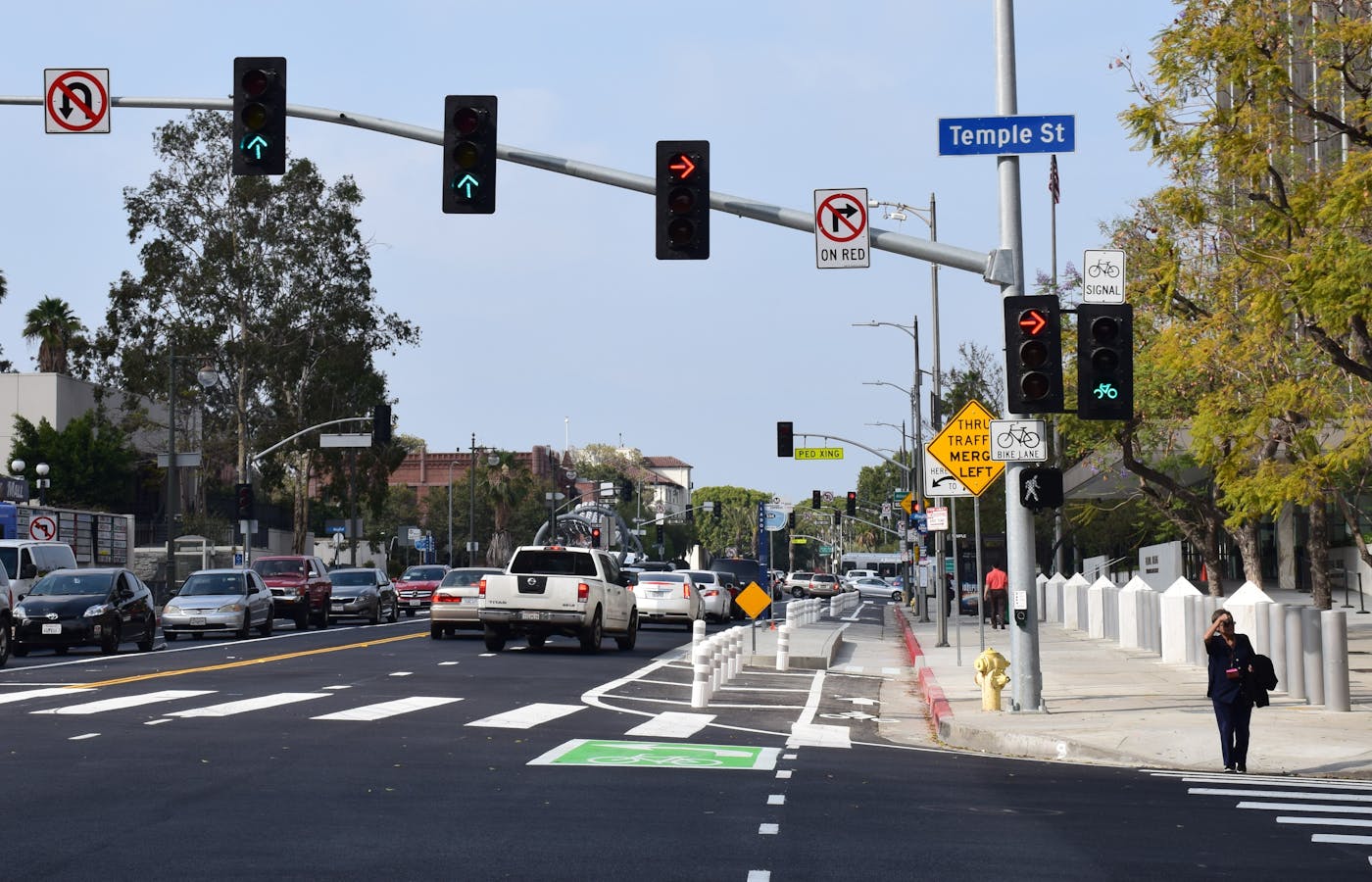This Ground-Breaking Research Will Improve Intersection Safety
By: Dave Snyder, PeopleForBikes’ senior director for infrastructure

Diagnostics firm MicroTraffic released 10 design recommendations for reducing crashes where a protected bike lane approaches and crosses an intersection.
By all accounts, protected bike lanes save lives, and for the most part, they prevent the most dangerous kind of crashes: getting hit from behind. They don’t, however, keep cyclists safe at intersections, where most crashes happen. There are also a lot of nuances among intersections, with some designs being more dangerous than others. Understanding what works and what doesn’t is key to improving intersection safety and saving lives (as well as money — the average city spends around $100 million a year on road crashes).
Knowing this, PeopleForBikes made the decision to support sophisticated research from MicroTraffic, a company that helps engineers proactively improve road safety by analyzing traffic videos to produce near-miss data and reports. For this study, the firm relied on artificial intelligence analysis of thousands of hours of video footage focused on signalized intersections. The analysis took into account a variety of situations to determine which designs were more or less likely to result in “right hook” crashes or close calls.
A key benefit of this analytical approach is that it considered “near misses” and evaluated the actual behavior of road users. Without video analytics, engineers traditionally have to rely on the evaluation of crashes after they happen, leaving them with less meaningful data and often no reliable information about specific behaviors that may have led to the crash.
After recording data from August 2021 to April 2022, MicroTraffic created a tool that can predict, with impressive accuracy, the rate of crashes and injuries people will suffer depending upon the infrastructure at any given intersection. The resulting report makes 10 recommendations based on design principles, all of which should reduce the number and severity of crashes where a protected bike lane approaches and crosses an intersection. This article summarizes the findings of that report.
By far, the most effective intervention was an exclusive signal phase for people on bikes. At such intersections, right-turning cars are held back for a portion of the green signal phase while bicycles and pedestrians cross. Then, bicycles and pedestrians are held back to allow cars to turn. Separating the signal phase reduced conflicts by a whopping 93%. Unfortunately, this treatment is rare because the tradeoffs are significant: both motorists and people on foot and bike experience shorter green phases and therefore longer delays. The report’s top recommendation was to examine those tradeoffs more carefully and choose to implement the exclusive phase more often.
The rest of the report examined treatments that reduce conflicts where “permissive right turns are allowed,” or instances where cars are allowed to turn right even though people on bikes may be crossing the intersection on their right. Of the nine other recommended design principles, most aim to increase the visibility of people on bikes at the intersection and reduce the speed of motor vehicles at the potential conflict point:
- Use paint and signs to alert motorists that they are crossing the bicycle path of travel. Treatments such as a green lane across the intersection or a “crossbike” (a crossing lane for bikes) adjacent to the crosswalk can reduce conflicts by as much as 36%.
- Design “tight” turns with small turning radii, forcing motorists to navigate their turn at very slow speeds.
- Reduce crossing distances by reducing the travel lanes on the cross street or widening the sidewalk and/or median.
- Build separate right-turning lanes so people on bikes can predict whether an adjacent car is about to turn right.
- Swerve the “crossbike” at the intersection to increase the distance between the turning vehicle and the crossing bicycle.
The report also made some more general recommendations, which will inform PeopleForBikes’ work advising and advocating for safer intersections:
- Mixing zones, or combined bike/turn lanes, don’t work well. Researchers found that motorists typically do not merge into the bike lane across the dashed bike lane line as they are required to when an unprotected bike lane approaches an intersection. Instead, they stayed to the left of the bike lane before turning, exposing the bicyclist to “same potential right-hook conflicts as with a protected approach.” The report suggested that “designers are likely better off simply designing for full physical separation up to the intersection.”
- Take extra caution when cyclist volumes are low. The data from this report is yet more evidence of the “safety in numbers” theory, which supports that people on bikes are safer there more people there are riding bikes.
- Take extra caution when downhill grades increase cyclist speed approaching an intersection. Grades steeper than a gentle, 2% slope resulted in an increase of conflicts as high as 47% in some cases.
We hope city planners, elected officials, and decision-makers nationwide pay attention to the recommendations outlined in this study, helping design safer bike networks that are accessible to people of all ages and abilities.
Related Topics:
